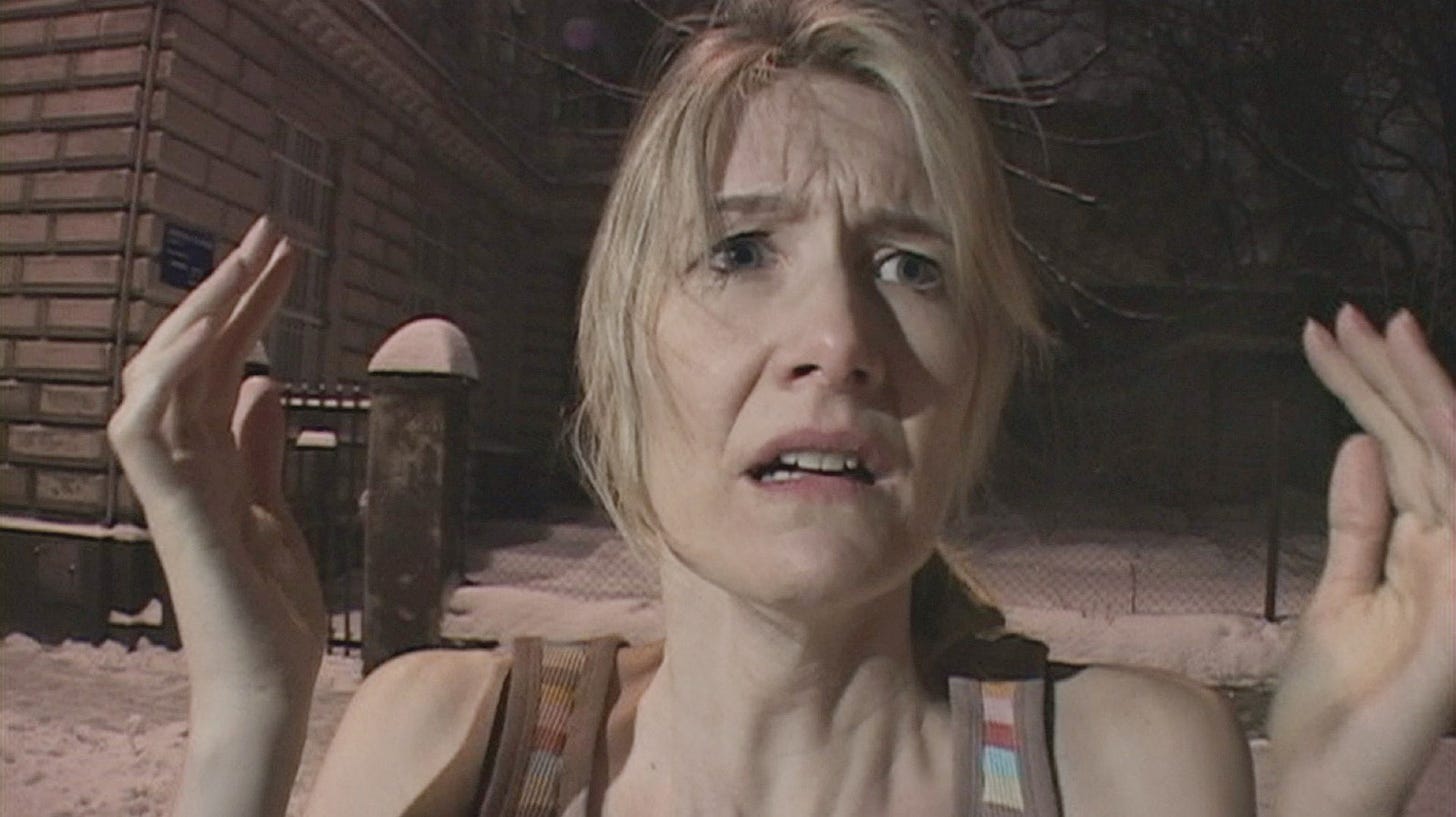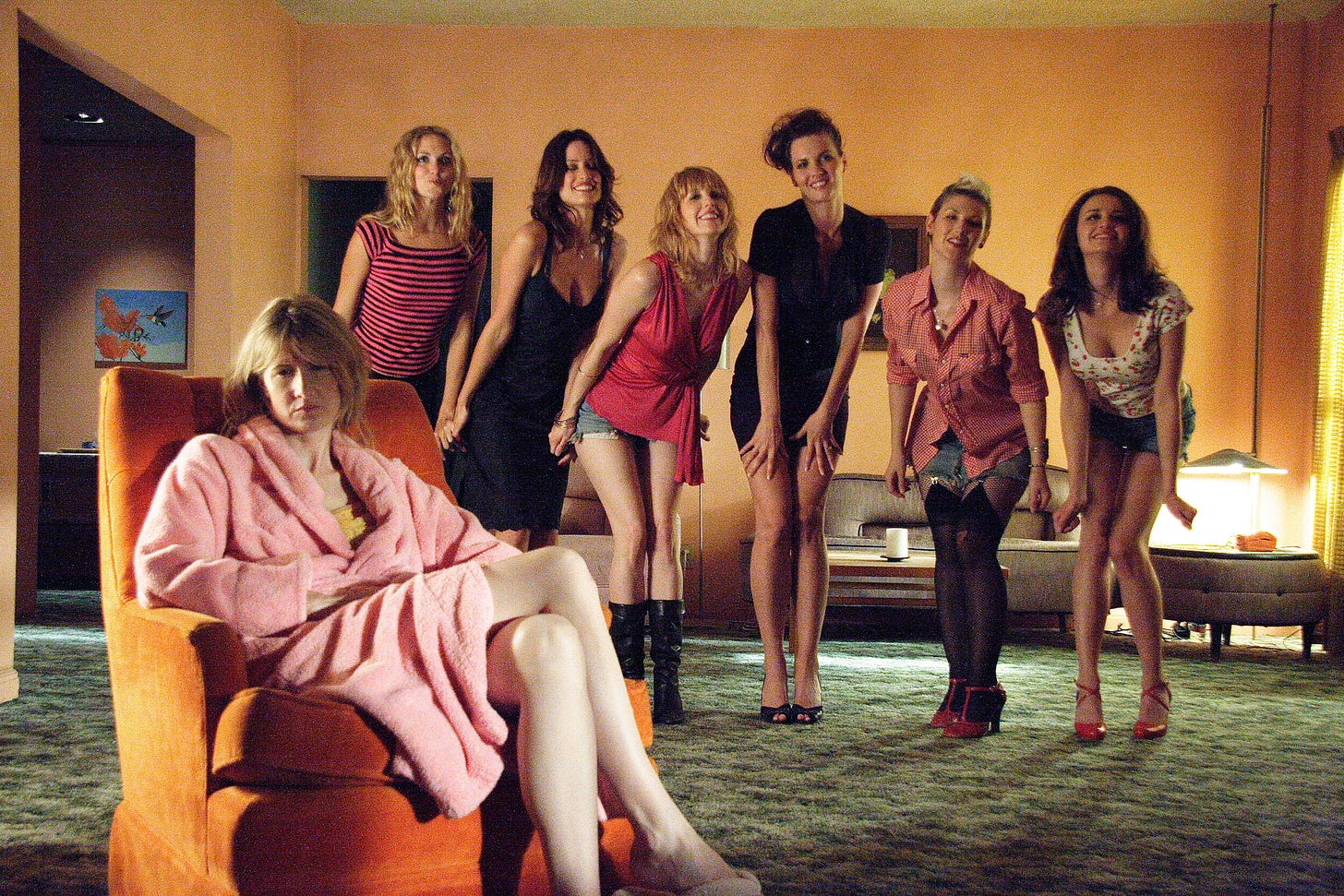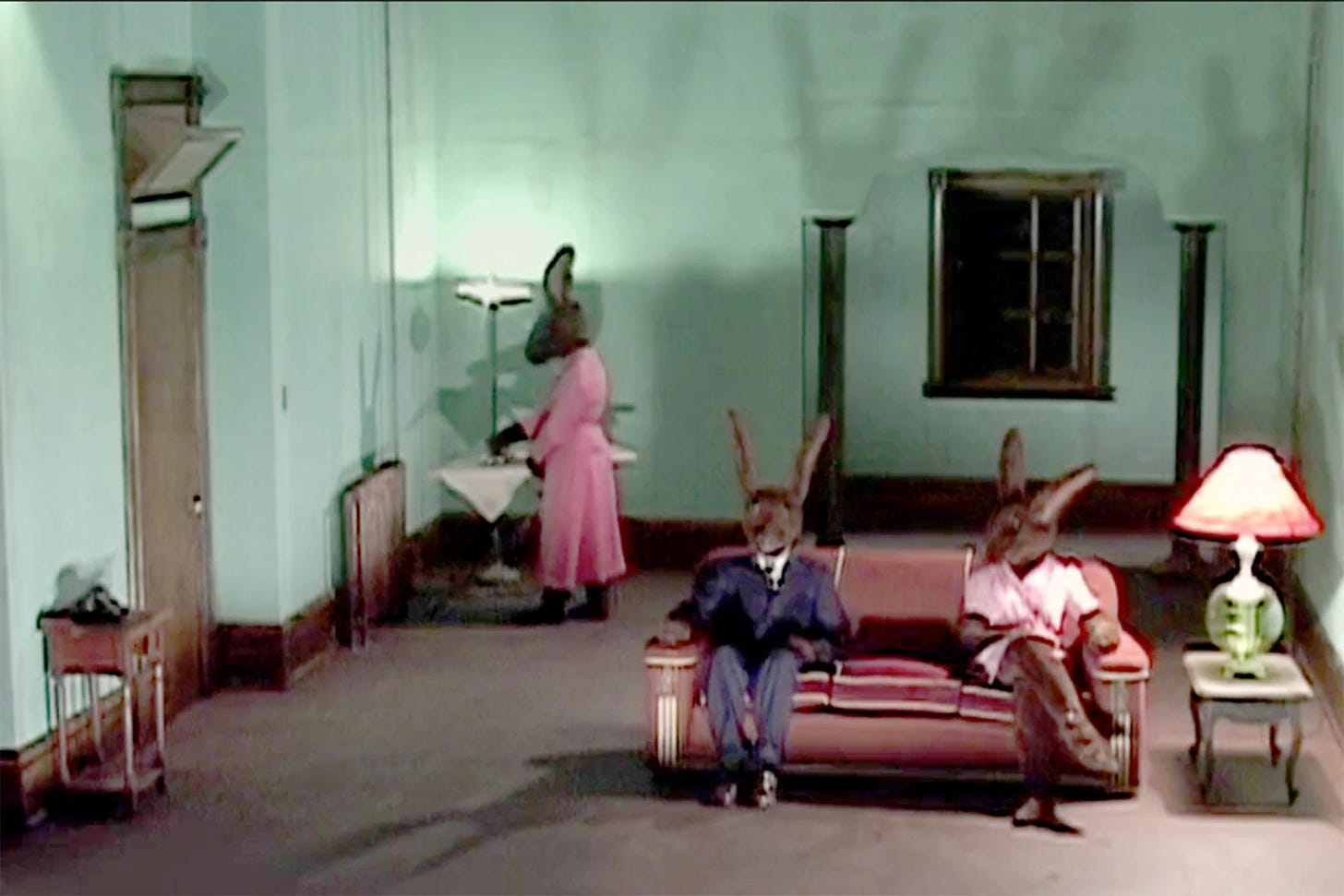The Expanding Boundaries of David Lynch's 'Inland Empire'
David Lynch’s ambitious, sprawling, digital-to-the-max 2006 feature flopped in theaters in 2006 but has stubbornly refused to disappear from the conversation.
Coming back to Inland Empire, was your company Absurda born with the need to distribute the movie, or had it been in existence before?
It had been in existence before, because we started distributing Eraserhead and the short films and DumbLand. When Inland Empire came along, it was a risk, but it seemed a risk worth taking to go on our own for distribution. And I think it would have worked out if there had been more desire to see Inland Empire. But, you know, the good news is that films, some films seem to come and go—even if they were popular for their time, they disappear. […] But some films, even if they might not have been so popular, they have a way of continuing, and I am hoping that is Inland Empire — that over time, it will kind of keep going.
—David Lynch in conversation with Richard A. Barney in David Lynch: Interviews
I can still remember the sinking feeling that set in the first time I saw Inland Empire in 2006. Shot on the sort of consumer-grade video cameras you could buy off the shelf at Circuit City in the ’00s, Inland Empire abandoned the lush visual textures of every Lynch film for low-res video images that often made it look less like a Lynch movie than a demo reel for a movie Lynch might have wanted to make someday. That feeling never fully let up. The film, as I saw it then, contained moments of brilliance but those moments felt a bit lost in a movie that had seemingly been edited mainly to cut it down to a three-hour running time with no further work done after meeting that benchmark. Worse, it felt like watching a David Lynch film through a filter, one that only occasionally thinned enough to reveal the “real” Lynch film beneath it.
I thought of Inland Empire less like a proper entry in the Lynch filmography than an extended footnote, but I rewatched it hoping my feelings would shift, just as they had shifted with other Lynch films. Lost Highway disappointed me in 1997 but blew me away a decade later. I don’t think I really liked Twin Peaks: Fire Walk With Me until Twin Peaks: The Return, which made it play like an indispensable bridge between the two series rather than a frustrating postscript. No film can disappoint you like one from a filmmaker you love, but time has a way of casting those disappointments in a different light. I didn’t see that different light when I rewatched it on DVD a few years later, but I see it now.
Sometimes it’s just a matter of growing more forgiving and appreciative of a director’s style and sensibility, even when they’re not in peak form. I’d rather rewatch, say, The Gingerbread Man or Prêt-à-Porter (to shift to another director) than watch most of the new movies that show up on streaming services in any given week. Sometimes it’s a matter of scarcity. Robert Altman isn’t making any new films anymore, but neither, apparently, is Lynch. Seventeen years later, Inland Empire remains his most recent feature film. Mostly it comes down to this: movies don’t change but we do, so of course we’re going to look at them differently at different points in our lives.
Watching the film via the new Criterion Collection Blu-ray, Inland Empire quite literally looks the same, though restoring the film for home video and last year’s theatrical release was seemingly quite the effort, a process that involved downscaling the film back to Standard Definition then up to High Definition. (Lynch created an illustrated flowchart included in the Criterion booklet.) Whatever the process, it matched the film as I remembered seeing it projected in 2006.
That’s still a difficult look to get used to. (And I know at least one longtime Lynch admirer who still hasn’t gotten around to watching Inland because they find the appearance of the film so off-putting.) It’s the look Lynch apparently wanted, however. The director shot the film over three years working with a limited budget, but other budget-minded filmmakers of the era made better-looking, or at least slicker-looking, films.
Sometimes it’s hard to see Inland Empire as anything but a film hobbled by its limitations. In an early scene set in the mansion of movie star Nikki Grace (Laura Dern), sunlight beaming through a window blows out nearly a third of the frame. In other moments the consumer-grade equipment gives the film a consumer-grade feel, as if we were watching an elaborate home movie that just happened to star Dern, Jeremy Irons, Justin Theroux, Harry Dean Stanton and other familiar faces.
Other moments, however, use the possibilities of SD digital video to the film’s advantage. The camera creates an eerie halo effect around the light posts lining a snow-covered Polish street, for instance, and the murkiness of the film’s darker scenes create a sense of unease, as if anything could enter the frame once the darkness lifted. (This is likely what Lynch meant when he referred to DV allowing “more room to dream.”) The mundaneness of the imagery works to the film’s advantage in other ways as well. The many close-ups of Dern’s face capture a finely tuned instrument capable of conveying the slightest shift in her character’s emotion.
The flatness of the DV can create a sense of strangeness, too, however paradoxical that sounds. Over the course of the film, Nikki undergoes a sort of identity crisis of the kind suffered by so many Lynch characters since Lost Highway, sometimes inhabiting the lives of other women (or perhaps they inhabit hers or maybe that’s not even the right way of thinking about it anyway). One such shift lands her in a backyard that could be in California or Poland or some other plane of existence altogether. There she talks to two women lounging on the lawn, asking “Look at me and tell me if you’ve known me before.” “Yes. We will do that,” one replies, but then elaborates no further, a strange question and an even stranger response delivered against the backdrop of a bland suburban anywhere. When nothing feels like a dream, everything feels like a dream.
Some sequences, however, feel more like a dream than others. Inland Empire incorporates footage from Rabbits, a kind of dread-filled surreal sitcom featuring characters in rabbit costumes (voiced by Mulholland Dr. co-stars Naomi Watts, Laura Harring, and Scott Coffey) and a dance sequence set to Little Eva’s “The Locomotion” provides another disturbing highlight, creating one of the few moments in the film that approaches joy before ending abruptly (accompanied by an aggressive industrial noise; Lynch’s sound design always does a lot of work, and here it shoulders more of the burden than usual).
Nikki’s journeys begin with a disturbing visit from a new neighbor (Lynch regular Grace Zabriskie) shortly before she lands a role in new movie, On High in Blue Tomorrows. As production begins, her excitement fades upon learning the film is actually a remake of an older film that was never finished because its leads were murdered. But this seems merely a side effect of the film itself, a cursed piece due to, as one character puts it “something inside the story.” Before long, Nikki seems to be slipping into that cursed story itself.
Lynch made Inland Empire without a fully fleshed-out screenplay and the resulting film plays like a magnet for some of the themes floating around his then-recent work (largely putting the G-rated, and excellent, The Straight Story aside). The interest in blurred identities, whose roots can be found in Twin Peaks and which flowered in Lost Highway and Mulholland Drive, is at heart of the film alongside Lost Highway’s focus on jealousy and infidelity and Mulholland Drive’s depiction of the malevolent underside of Hollywood’s manufactured illusions. It sometimes resembles a magnum opus painted on the back of a dishrag, but a magnum opus nonetheless.
That goes a long way to explaining why Inland Empire has, in Lynch’s words, found “a way of continuing.” The film drew mixed reviews from critics in 2006 and its box office receipts suggest only the Lynch faithful showed up in theaters. But it almost seems like a film designed to be rediscovered and reassessed years after its release, a baffling work crammed into an unwieldy package but also unmistakably a real, and formidable, David Lynch film in its own right, uncooperative hard shadows, Rice Krispie-sized pixels and all (even if not everyone recognized it as such at the time).
Stylistically, it proved to be a cul-de-sac, and that’s probably for the best. Lynch would shoot Twin Peaks: The Return digitally, but with much more, for want of a better word, “cinematic” results and it’s probably telling that other directors intrigued by the possibilities of digital filmmaking in its cruder, early years have stuck with those tools as an aesthetic choice as technology has advanced. But it’s a cul-de-sac worth visiting, one that suggests that the coldness of the then-dawning digital age would prove just as hospitable to the restless phantoms of our analog past.







As I noted when I re-watched this a few years back, it's hilarious that Lynch went to the trouble of renting a Panavision Panaflex camera for this shoot only to use it as a prop for the film Irons is directing.
I was one of the faithful that saw this film in the theatre. I remember it being a difficult watch at the time, but it has lingered with me over the years. (As most Lynch does)
I once heard this film described as “Mullholland Drive, if found behind a dumpster at Hollywood and Vine” and that feels accurate to me. Its appeal (and scares) for me feel similar to the cursed video in “Ringu” and the forbidden room in “Pulse”. It feels like a haunted film. Something you shouldn’t be watching and the technology used to make it connects us to that feeling.
Sure, it has a cast of big stars and is made by a big director, but all that makes it feel like it an artifact found from another dimension.